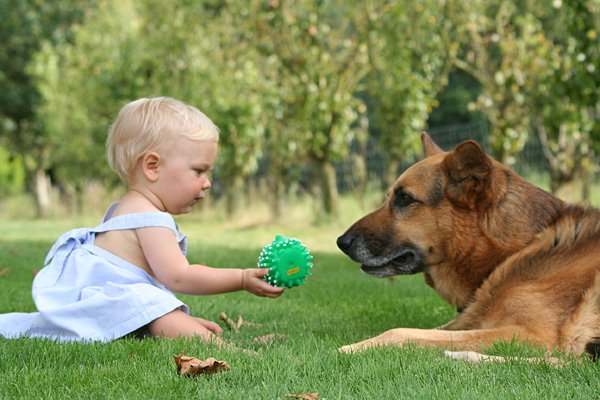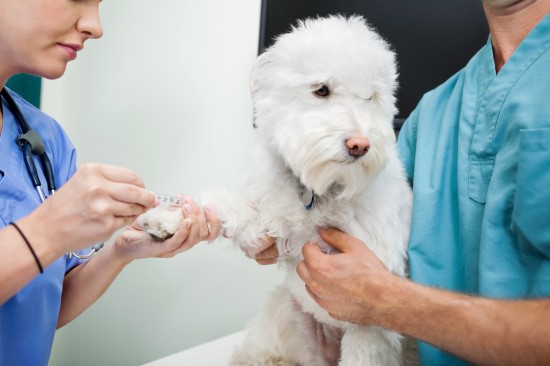Assisted living facilities and hospitals all over the country have used pets to offer comfort when people are feeling low. Cats, dogs, birds and even hamsters and guinea pigs are often used for every age as a means for distraction, comfort, companionship and good positive energy that is so often needed in times of sickness or loneliness.
An assisted living Minnesota therapeutic dog named Kaiser, has been making visits for several years to seniors coping with physical and mental disabilities. Kaiser is also known in Minnesota schools, hospitals and long term rehabilitation centers. Besides patients, Kaiser and his owner volunteer their time and have made several friends with staff members, nurses, doctors and caregivers all over the state. Besides having dogs like Kaiser make weekly rounds to different hospitals, many assisted living facilities have a resident pet or allow residents to keep pets themselves. Living with any pet can have its pluses and minuses of course.
The Positives and Negatives of Pets in Assisted Living Facilities
Allergies- residents can have intense reactions to pet dander that can make their current situation even worse. Before introducing any pet to an assisted living facility, its wise to double check everyones tolerances for cats and dogs. Best case scenario should there be allergies is to have one common area exclusively for the resident pet and for residents who are not allergic to spend some time without making anyone else miserable with itching and sneezing.
Cleaning, feeding and general care of the resident pet or pets- Owning a pet is a big responsibility on top of the other delegated tasks for assisted living staff. It will have to be the concern of all staff members to make sure the resident pet is properly fed, bathed and taken outside often. When residents own pets inside their rooms, even if it is just a goldfish, assisted living staff need to make sure each resident as well as their pet are having their needs met, which can be burdensome for an already busy facility.
Financial concerns- Pet food and vet bills can add up. Its probably not the best idea for any assisted living facility to take on another financial responsibility if funds are already stretched thin.
The positives highly outweigh the negatives- happier residents, lowered anxiety, reduced depression and stress and brighter and more positive energy throughout the residence.
Pets can offer an outreach for residents who may have trouble speaking and communicating with other residences.
Pets can give seniors a job and a purpose to their lives, by feeding them, grooming them and taking them on walks.
Studies have shown that the genuine, non-judgmental love that animals can give to residents in assisted living facilities can prove dramatic results. If your facility cannot have a live-in pet, contact your local humane society and see if a dog or cat could come for weekly visits.

 Jack Russell Hereditary Health And Average Longevity
Jack Russell Hereditary Health And Average Longevity
 Is Chemical Castration An Option For Your Dog?
Is Chemical Castration An Option For Your Dog?
 Nutritional & Respiratory Disorders In Reptiles
Nutritional & Respiratory Disorders In Reptiles
 Cat and Dog Boarding Winnipeg - For Better Care and Grooming
Cat and Dog Boarding Winnipeg - For Better Care and Grooming
 A Short Explanation Of Dog Agility Training Equipment
A Short Explanation Of Dog Agility Training Equipment
 Get Chicken Runs to keep your chickens clean and away from predators
Get Chicken Runs to keep your chickens clean and away from predators
 Have You Thought About Your Dog Donating Blood?
Have You Thought
Have You Thought About Your Dog Donating Blood?
Have You Thought
 Narrow Boat Holidays With Your Dog
Narrow Boat Holid
Narrow Boat Holidays With Your Dog
Narrow Boat Holid
 Heatstroke And Dogs - Keeping Your Dog Safe From Overheating In The Summer
Heatstroke And Do
Heatstroke And Dogs - Keeping Your Dog Safe From Overheating In The Summer
Heatstroke And Do
 Does Your Dog Bark At Absolutely Nothing?
Does Your Dog Bar
Does Your Dog Bark At Absolutely Nothing?
Does Your Dog Bar
 10 Dog Breeds That Have Dropped In Popularity Over The Last Decade
10 Dog Breeds Tha
10 Dog Breeds That Have Dropped In Popularity Over The Last Decade
10 Dog Breeds Tha